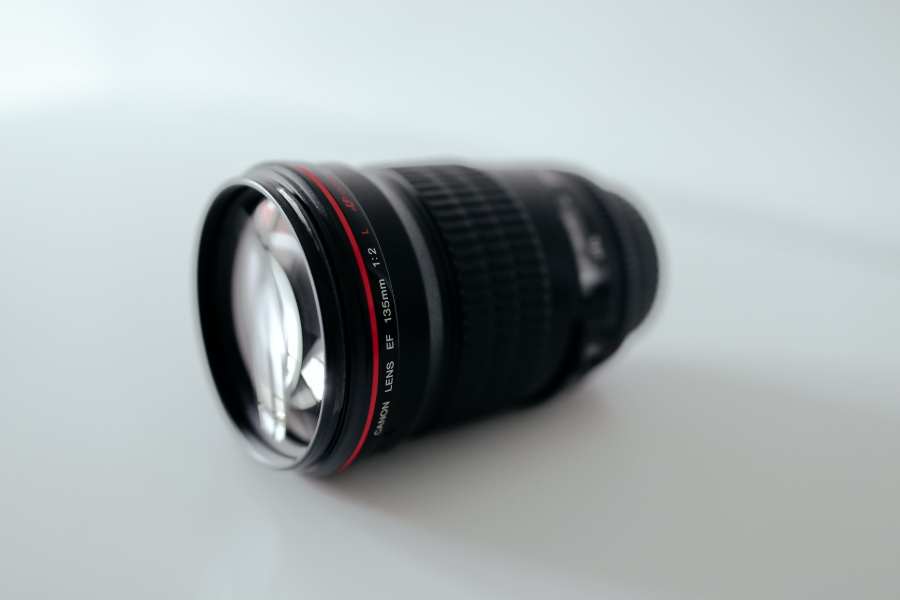
As an Amazon Associate we earn from qualifying purchases.
In my years of experience as a professional real estate photographer, I've come across various types of camera lenses, and one that stands out is the EF lens. I'm going to explain what an EF lens is and how you can use it to capture real estate photos.
Quick Navigation
An EF lens is a type of Canon camera lens that stands for "Electro-Focus." They have an image circle covering a full-frame sensor, designed for use with Canon's DSLR cameras and EOS film bodies. These lenses feature a built-in motor for automatic focusing and use electrical metal contacts to communicate with the camera.
The evolution and innovation of this lens technology have led to enhanced photographic capabilities, particularly for real estate

EF lenses were first introduced in 1987 by Canon to accompany their line of SLR cameras. This marked a significant advancement in lens technology, as their design integrated a motor within the lens itself for improved focusing capabilities. In my experience, this makes capturing sharp and detailed real estate images much easier and more efficient.
Canon hit a production milestone of 130 million EF lenses in 2017. Over the years, Canon has expanded its EF lens line to include various focal lengths and designs, each with unique benefits depending on the photographer's needs.
For example, wide-angle lenses are great for showcasing the entirety of a room, while telephoto lenses can help highlight architectural details from a distance. The continued development and diversity of EF lenses have made it easier for real estate
I'd like to discuss EF lens compatibility with various types of cameras, such as full-frame DSLRs, APS-C DSLRs, and mirrorless cameras. These distinctions are crucial when selecting the right lens for your
When it comes to identifying whether my lens is an EF lens, I look for a red dot on the lens itself. This red dot is used for aligning the lens with a similar dot on the camera body when mounting the lens.
In contrast, if the lens has both a red dot and a white square, it is an EF-S lens. EF-S lenses are designed specifically for crop sensor cameras and have a shorter back focus.
It's vital for real estate photographers to identify the type of lens to ensure optimal compatibility and performance with their cameras.
Choosing the best EF lens for real estate photography can greatly enhance the quality of your images. In addition, understanding the capabilities of these lenses can help you choose the right lens for your work.
According to the Camera & Imaging Productions Association, more than 9.4 million interchangeable lenses were shipped worldwide in 2022. Canon lenses are among the most in demand. This is partly because Canon EF lenses offer a range of features to help photographers capture stunning images.
| Features | Details |
| Focusing system | Fast, quiet electro-focusing |
| Image stabilization | On selected lenses only |
| Mount | Suitable for full-frame and crop sensor cameras |
| Zoom range | Widest at 8mm, maximum zoom at 800mm |
EF stands for Electro-Focus, which allows fast, quiet, and precise focusing. These lenses have an integrated autofocus motor, ensuring that the focus is smooth and accurate. For interior and exterior

Canon EF lenses utilize the Ultrasonic Motor (USM) technology for their autofocus system. This technology allows for quick and efficient autofocusing while keeping the noise level minimal. The autofocus system is particularly beneficial when you need to capture multiple shots in a short amount of time while maintaining focus.
Image Stabilization (IS) is another feature that some EF lenses offer. The IS system helps reduce camera shake and blur, resulting in sharper images even at slower shutter speeds. I find image stabilization a valuable feature, particularly when shooting in low-light conditions or using telephoto lenses that are prone to blurring.
EF lenses are designed for Canon's EOS system and use the EF mount. This means you can use them on both full-frame and crop-sensor cameras. Having the flexibility to switch between different camera bodies is beneficial when shooting real estate, allowing you to adapt your setup to the needs of each property.
The global interchangeable lens market expects a 2.6% compound annual growth rate by 2026. One of the key players in the industry is Canon, which produces EF lenses of various focal ranges, mechanisms, and features.
In my experience, a versatile selection of EF lenses can greatly enhance
To maintain and clean EF lenses, I recommend using a lens blower or brush to remove dust and debris from the outer surfaces. A microfiber cloth and some lens cleaning solution can help with smudges and fingerprints. Remember to store your lenses in a protective case when not in use.
EF lenses feature an electronic focusing system, whereas AF lenses refer to autofocus lenses. Keep in mind that while EF lenses have autofocus, not every AF lens is necessarily an EF lens.
Although Canon EF lenses are designed specifically for Canon cameras, it's possible to use them on other camera brands with adapters. However, using these lenses on non-Canon cameras may result in losing autofocus capabilities, reduced image quality, or other compatibility issues.
The term "EF" stands for Electro-focus, and these lenses have been designed for compatibility with both full-frame and APS-C cameras. I believe that EF lenses will continue to be a reliable option for many photographers, especially in the realm of real estate, where image quality and versatility are of utmost importance.
